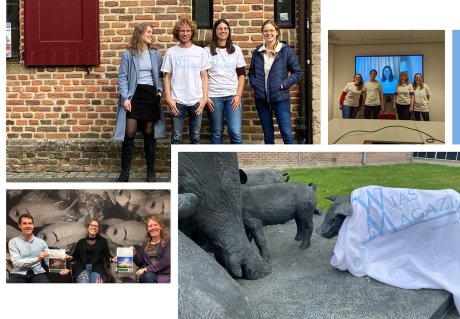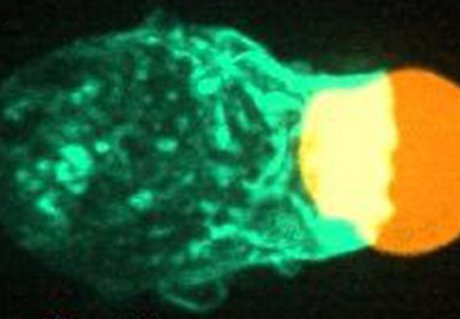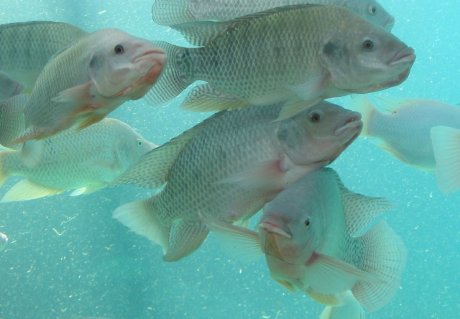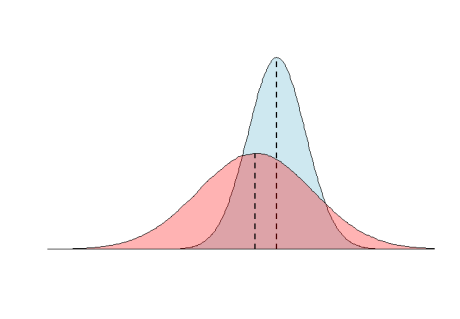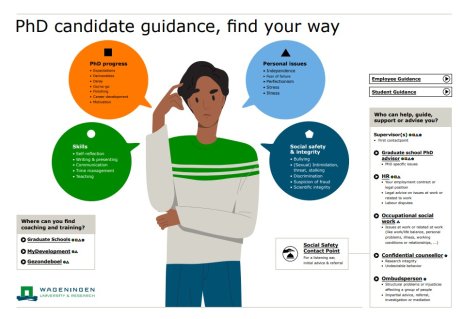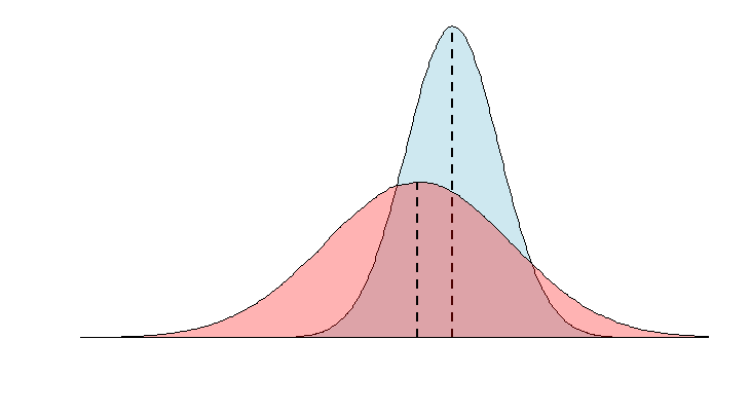
Your partner matters for successful offspring: A better selection strategy for animal breeding without sustainability loss
WIAS Magazine - Summer edition 2024
Research Highlight
Keywords: Genetic selection, Animal breeding, Mating decisions, Improving breeding programs, Gain and diversity
Breeding programs are all about improving traits of animals. This typically means that animals with the best traits are selected, e.g., the fastest horse or the most efficient pig. If the goal is to produce the fastest horse in the next generation, not only should we then select horses as parents that have the genetics for being very fast but also those that produce highly variable foals. By that we increase the chance for an extremely fast offspring that can win future races. In other words, we want the next generation to be more variable in addition to being very good on average (Figure 1). What is explained here with horses as an example holds for any species and any trait.
Figure 1: Distributions of performances of offspring of two hypothetical matings (red and blue). Although the average performance of offspring from the red mating is lower than from the blue mating (indicated by scattered lines), a larger fraction of individuals of the red mating show a very high performance that is higher than our selection threshold (indicated by the solid black line). Instead of thinking about it as a fraction, one can also think about it as the probability for each and every one of the offspring to be better than the threshold.
In the paper that was recently published in “Genetics Selection Evolution”, we extended the idea to not only consider the variability of the offspring, but also the variability of the grandoffspring (Figure 2). We published a method to predict the genetic variance of the grandoffspring generation. This method requires knowledge about which genes are linked together on a chromosome to work out how likely it is that these genes are passed on together to the offspring and grandoffspring. In addition, information about the effects of the alleles of the genes are required. Both can be estimated with contemporary statistical models. We tested the new selection criteria in a proof of concept study with the result: it works! Not only could we show that our method helped to increase genetic gain, but we were also able to improve genetic diversity at the same time compared to other previously published selection criteria.
Figure 2: Distribution of performances of offspring (blue) and grandoffspring (red) of a mating. The solid black lines indicate the selection thresholds, i.e., the levels below which we would not select an individual. The circles indicate the fraction of individuals that are selected and that is considered in our new selection criterion.
This works by bringing good combinations of genes, or alleles for simplicity, together. Consider for example Figure 3. Suppose the individual a is a cow and needs to be mated. The available bulls are either b or c. Now, it is difficult to make a decision between bull b and c because their genetic value, referred to as the ‘breeding value’ by geneticists, are identical. Suppose the green circles are beneficial alleles with a value of +1 and the red ones have an effect of 0, then b and c both have a value of 2. If we remember the Mendelian laws of inheritance, we can work out the frequencies of genotypes in the offspring. If we mated animal b to a, the most extreme breeding values we would get in the offspring would be 0 and 4, whereas they would be 1 and 3 for the axc mating. So, the axb mating promises more extreme animals.
However, if we then considered the offspring of the offspring, i.e., the grandoffspring, then the lowest and highest possible value of the gametes, i.e., sperm or oocyte cells, of offspring of the axb mating is 0 and 2 whereas it is 0 and 3 for the axc mating. If mated to individuals of the same constitution, the lowest and highest would be 0 and 4 for axb and 0 and 6 for axc. Thus, if we look two generations ahead, we find even more extremely good performances of descendants of the axc mating. This simplistic example shows that the genetic variance of the axc mating is higher in the second generation. This is beneficial because we can now select the very, very fast horse with a value of 6. Our new method predicts these variances for more complicated cases. The benefit is that it tends to keep more of the good alleles in the population and brings them together. In our study, we found a 5% increase in the genetic level compared to conventional selection criteria while also having beneficial effects on the diversity of the population at the same time.
Figure 3: Overview of the three diploid individuals considered in the example. Individuals a and b are only homozygous at the third gene whereas individual c is fully homozygous.
References
Niehoff, T.A.M., ten Napel, J., Bijma, P., Pook, T., Wientjes, Y.C.J., Hegedűs, B., and Calus, M.P.L. Improving selection decisions with mating information by accounting for Mendelian sampling variances looking two generations ahead. Genet Sel Evol 56, 41 (2024). https://doi.org/10.1186/s12711-024-00899-2
